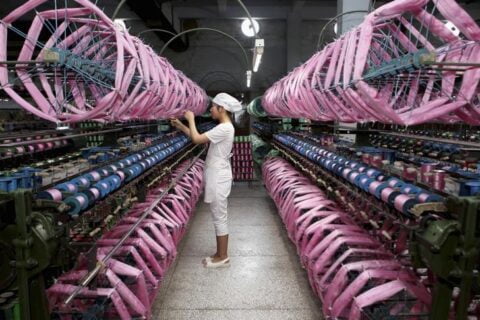Contents
UK Retail Sales came into focus after the Bank of England‘s recent interest rate decision. Following a robust 3.6% increase in January, UK Retail Sales stagnated in February 2024, failing to meet economists’ forecasts of a slight 0.3% decline. This article delves into the details of the UK Retail Sales report, analyzing sales trends across different sectors, their impact on the Bank of England’s monetary policy, and the market’s reaction.
UK Retail Sales Report: February 2024
The Office for National Statistics (ONS) reported that UK Retail Sales remained flat month-on-month in February compared to January’s significant growth. This stagnation comes despite economists’ predictions of a minor decline.
Breaking Down the Numbers:
- Non-food Stores: The bright spot in the report, non-food stores saw a 0.7% increase in sales volumes compared to January. However, this growth wasn’t enough to offset a year-on-year decline of 0.5%.
- Clothing Stores: Leading the charge within non-food stores, clothing store sales rose by a surprising 1.7% month-on-month.
- Department Stores & Others: Department stores and other non-food stores also contributed to the positive non-food sales figures, recording increases of 1.6% and 0.4% respectively.
- Food Stores: In contrast to non-food, food store sales volumes dipped by 0.3% in February compared to January.
- Automotive Fuel: Sales of automotive fuel also declined by 1.3% month-on-month.
- Long-Term Trends: Looking at a broader timeframe, retail sales volumes for the three months leading to February were down 0.4% compared to the previous three months. Year-on-year, February’s figures represent a 0.4% decline in retail sales volumes. More importantly, they remain 1.3% below pre-pandemic levels (February 2020).
Bank of England Monetary Policy Implications
This stagnation in UK Retail Sales aligns with the Bank of England’s cautious stance on interest rates. During their recent meeting, the Monetary Policy Committee (MPC) displayed a dovish shift, voting 8-1 to maintain the current interest rate of 5.25%. This decision comes after a previous meeting where two MPC members advocated for a rate hike. The weaker consumer spending evident in the retail sales data suggests potentially dampening demand-driven inflation, which could fuel discussions within the BoE about a future interest rate cut.
GBP/USD Reaction to UK Retail Sales Numbers
Prior to the release of the UK Retail Sales figures, the GBP/USD currency pair reached a high of $1.26750 before dipping to $1.26234. The news of flat retail sales resulted in a further decline to $1.26197, before stabilizing. As of Friday, the GBP/USD settled at $1.26268, reflecting a modest decline of 0.24%.

Conclusion
The February UK Retail Sales report paints a picture of a cautious consumer, potentially responding to rising interest rates and inflationary pressures. The Bank of England is likely to closely monitor these trends as they contemplate future monetary policy decisions. Investors will also be keeping a close eye on the upcoming speeches by Fed Chair Powell and voting FOMC members, particularly regarding their views on inflation, economic outlook, and the timeline for potential Fed rate cuts.










